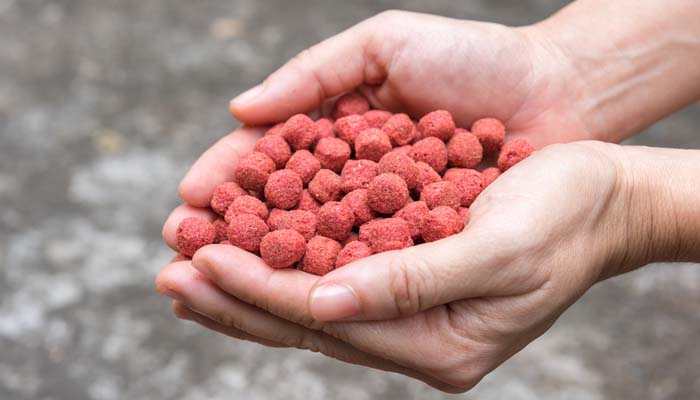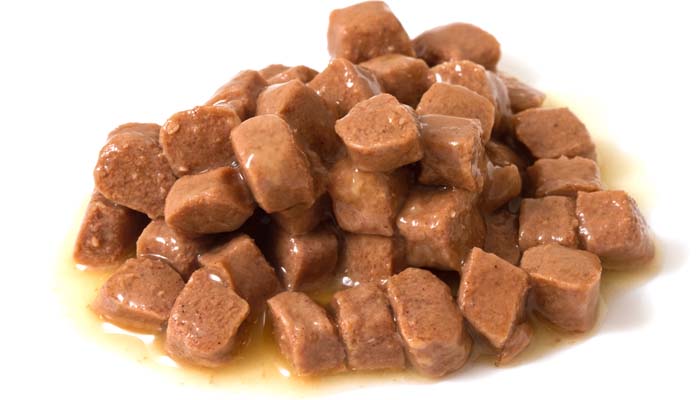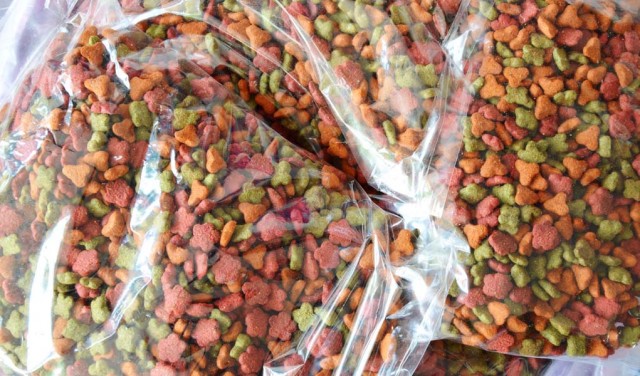
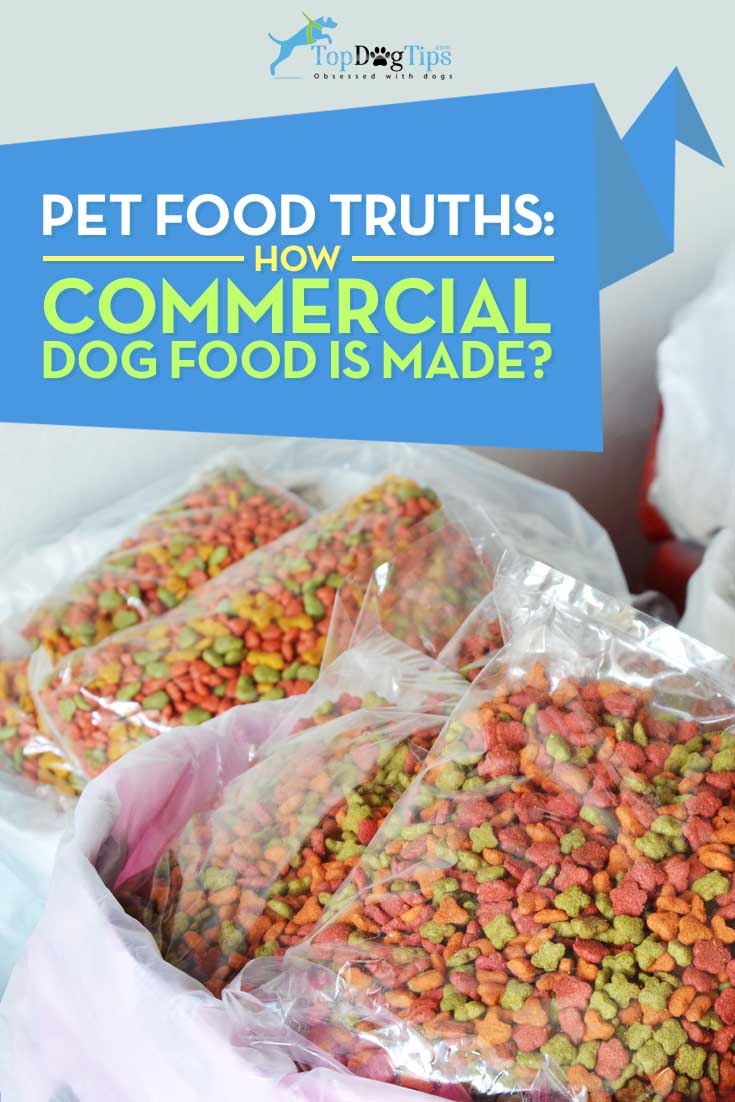
Table of Contents
Learning how commercial dog food is made will help you understand the ingredients that are used and how they are processed. This can tell you a lot about the health of the food that you're currently feeding your pet and how to choose a better quality product next time you're at the pet store. Purchasing a quality dog food isn't as simple as it seems.
Reading the label is necessary, but have you ever actually scanned the labels of the dog food products available at your local pet store? They can be extremely confusing and misleading. Learning about how commercial dog food is made can give you an understanding of some of the information on the label.
RECOMMENDED: 4 Different Types of Dog Food and Which One Your Dog Needs?
There are different types of dog food diets as well. You can choose from dry kibble, semi-moist food, wet dog food and others. Every type is made a different way, and it can effect the nutritional value of the product.
How Commercial Dog Food Is Made
Because pet food has different rules and regulations than food made for human consumption, reading the label can be really confusing. However, the Association of American Feed Control Officials (AAFCO) do have minimum standards that pet food companies must adhere to, and once you know them, you’ll be much more confident when perusing the pet aisle.
RELATED: The Best Dog Food Brand
The AAFCO requires all dog foods to be nutritionally balanced in terms of fat, protein, carbohydrates and essential vitamins and minerals. This standard makes it easy for owners to know that their dog is receiving everything he needs. Most brands will also have recommended daily feeding amounts on the label, depending on your dog’s age, weight and activity level.
The AAFCO requires that any dog food that doesn’t meet the nutritional requirements to be classed as ‘dog food’ should be marked instead as a ‘treat’ or ‘supplement’.
To understand how commercial dog food is made, you need to understand that the words on the dog food label mean not exactly what you think they mean. The AAFCO states the term ‘meat’ must be the muscle tissue of either cattle, sheep, pigs or goats (otherwise it must specifically be labelled as ‘boar’, ‘venison’ and so on).
‘Meat’ may include fat and gristle and organ meat. It does not include bone, and fish or poultry must be identified as such on the label as well. Some dogs have sensitivities and allergies toward certain protein sources, so be careful of this when you're reading the dog food label.
- ‘Meat by-products’ are clean internal organs from cattle, goat, pigs or sheep unless otherwise specified.
- ‘Meat meal’ designates rendered meat from any animal. The rendering process kills bacteria making it safe for consumption.
- ‘Bone meal’ is the same as meat meal except it can include rendered and ground bone as well (a calcium source).
Vitamins and Minerals
Most dog food brands will contain all the vitamins and minerals your dog needs to stay fit and healthy. Some of these are synthetically made and others are found naturally in the ingredients in dog food. You may notice the word ‘ash’ on the back of the packaging of your dog’s food, this is another word for trace minerals that are added to the food.
RELATED: How to Know Which is the Healthiest Dog Food?
Some of the most commonly found vitamins and minerals in dog food include:
- Vitamin A – a fat soluble vitamin that is an important antioxidant. It keeps your pup’s eyes, skin and coat healthy. Vitamin A is found naturally in liver.
- Vitamin B-12 – important for cell growth and a healthy nervous system. It is naturally found in organ meat.
- Vitamin C – keeps your dog’s immune system healthy and helps fight off infections.
- Calcium and Vitamin D – contribute to a strong skeletal system and healthy teeth and are found in bone meal.
- Copper, manganese, selenium and zinc – trace minerals that occur in tiny amounts in commercial dog food. They are essential for your dog’s health in tiny amounts, and pet food manufacturers are able to add just the right proportion when mass-producing food.
- Iron – naturally found in meat sources and keeps your dog’s blood healthy and oxygenated.
- Vitamin K – fat soluble and keeps blood healthy.
- Potassium – is found in carbohydrate sources and is good for your dog’s heart.
How Dry Dog Food is Made
Depending on the type of diet you feed your pet, understanding how commercial dog food is made will vary. The raw ingredients that make up your dog’s dinner, such as meat, poultry, fish, vegetables and grains are delivered to the manufacturing plant in bulk. As a general rule, commercial dry foods will contain higher amounts of grains and vegetables than wet food and therefore be higher in carbohydrates.
The vitamins and minerals are often bulk packed as well, usually in powder or liquid form. Some brands will also add antioxidants and preservatives to keep dry dog food fresher for a longer period of time.
For dry dog food, the components are ground to a floury consistency while still raw to ensure more even distribution of each ingredient. Consistency is very important and an even mix can only be done properly on an industrial scale. A properly blended mixture makes it easier for liquid to be absorbed into the dry dough, ensures even cooking and increases the nutrient availability.
RELATED: 9 Best Dog Food Blogs
Once all the dry ingredients are mixed, any liquid or fatty ingredients are added until the mixture forms a dough. Then the mix goes into the expander. The expander uses high pressure and hot temperatures to cook the kibble pieces before they are extruded.
The extrusion process pushes the dough through an opening in a plate before cutting it to size with mechanized blades – it’s a little like those modelling clay pump machines that squeeze out various shapes! This automated process cuts up tiny pieces of kibble into neat uniform pieces.
Then the dough is dried to remove any remaining moisture which could cause bacteria to breed and contaminate the food. The kibble pieces must be dried slowly and evenly to prevent undercooking, which leaves patches of moisture, or overcooking which causes a texture that’s too hard.
The kibble is then sprayed with oils and fats to give it a gloss, enhance its flavor and make it smell delicious to wet noses. Finally, the dog food pieces are cooled down for several minutes to prevent condensation forming on the inside of the bag which could cause contamination by mold spores or bacteria.
How Semi-Moist Kibble is Made
Semi-moist kibble starts out life much the same as dry kibble, but is extruded at a lower temperature and pressure to retain some natural moisture. The kibble is then tumbled in rotating containers with water and humectants that attract and retain moisture before being cooled.
As semi-moist food has a higher moisture content, it usually doesn’t have the shelf life of dry food. Sometimes it has added ingredients that combat mold and bacterial growth. It also comes in specially sealed packaging.
RECOMMENDED: What Ingredients Should You Look For in Dog Food?
How Wet Dog Food is Made
Fresh and frozen meat that goes into commercial pet food comes from sources like farms and slaughterhouses. Many commercial brands use the parts not suitable for human consumption, or the bits we wouldn’t like to eat like organs and fatty tissue. Often these parts are actually higher in nutritional value than the muscle meat that people prefer.
The meat is ground and mixed in large machines to ensure even distribution of calories and nutrients, and then vitamins and minerals are added in carefully proportioned ratios and mixed through the meat. All the ingredients are carefully combined, and then the mixture is heated through slowly.
RELATED: Top 5 Best Canned Dog Foods
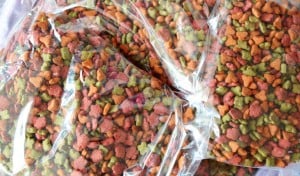 This process allows the meat and starches from the ingredients to gelatinize, making the food more palatable and easily digestible for your dog.
This process allows the meat and starches from the ingredients to gelatinize, making the food more palatable and easily digestible for your dog.
Foods containing grains or starchy vegetables need to have the starch fully cooked out, so they may be cooked at a higher temperature.
This mix is turned into a pâté-like texture. Some commercial pet food manufacturers keep the food as a mousse or pâté or turn it into chunks and add a gravy or jelly to it. There are some varieties that make the chunks out of textured vegetable protein. Some brands will instead form the meat mix into slices or chunks and broil them for a more complex texture and flavor.
Once the food is cooked, it is canned. Machines fill up metal cans, place the lids on and seal the can tightly. The food is kept hot during the process, so that when the can is cooled after sealing, it will form a natural vacuum seal that keeps the food preserved.
Once the cans are filled and sealed, they move into the sterilizer where they are heated to temperatures of 250° Fahrenheit for three minutes to kill off any remaining bacteria. The cans are then cooled before being labelled and boxed up for distribution.
READ NEXT: Expensive Dog Food Brands – Are They Worth the High Cost?




